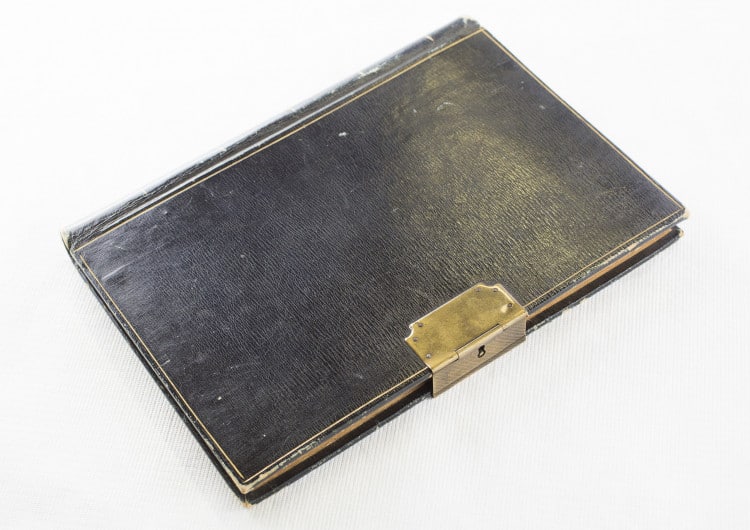- This is Isambard Kingdom Brunel’s personal diary which he started writing when he was 21 years old. He wrote in the first entry that he planned to use the diary to record his “feeling habits faults wishes hopes and every thing belonging to the present moment.”
- Brunel did not write in the diary every day; the first entry was written on 11 October 1827 and the last was written on the 6 April 1829. It is only 35 pages long.
- Written in ink, the leather-bound book is known as the “locked diary”. Brunel would have been able to keep his thoughts secret by using the metal clasp and a small key to lock the diary.
- He writes about his work as an assistant engineer on the Thames Tunnel and includes an account of an accident that left him seriously injured. The diary offers an interesting look into Brunel as a person and how he viewed himself.
The Story
Near death experience
By the time Isambard Kingdom Brunel started writing his personal diary, he was hard at work as the chief engineer on his father Marc Brunel’s project to build a tunnel under the River Thames. It had been designed to allow people and goods to travel safely under the busy river. It was a difficult and dangerous project with the work taking place just metres below the river.
On the 14 January 1828, the river broke through and started to fill the tunnel up with water. The force of the water caused some of the tunnelling equipment to collapse, briefly trapping Isambard Kingdom Brunel by his leg. When he freed himself, the water carried him along a section of the tunnel. Brunel was able to briefly escape into a less flooded part of the tunnel. He describes in his diary he could hear “the roar of the rushing water in a confined passage and by its velocity rushing past the openings was grand very grand. I cannot compare it to anything -cannon can be nothing to it.”
Unfortunately, the water soon flooded into the part of the tunnel where he had escaped, so Brunel made his way to a nearby shaft and was pulled up to safety by other workers. His time in the water left him with serious injuries, in his diary he wrote “If I had been kept under another minute when knocked down I should not have suffered more and I trust I was tolerably fit to die.” Sadly, six men were killed in the disaster and following his dramatic escape Brunel had to leave the Thames Tunnel project to recover.



